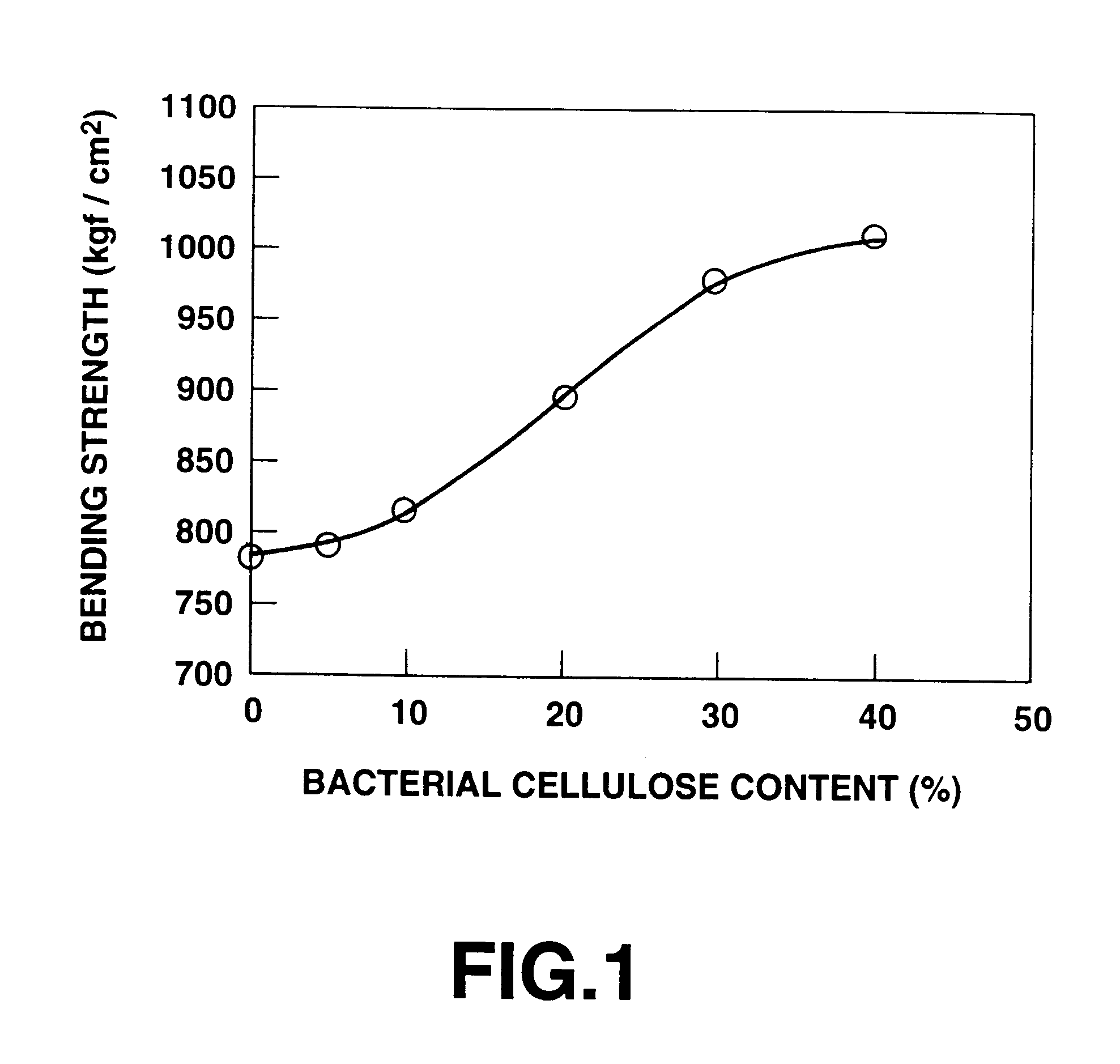Polymeric composite material and method of manufacturing the same
a composite material and polymer technology, applied in the field of polymer composite material and method of manufacturing the same, can solve the problems of high difficulty in recovering synthetic resin materials showing desired properties, limited application range, and high difficulty in preparing cabinets of audio/video equipment and other electronic equipment by using only biodegradable polymeric materials, and achieve the effect of dispersing into biodegradable polymeric materials with eas
- Summary
- Abstract
- Description
- Claims
- Application Information
AI Technical Summary
Benefits of technology
Problems solved by technology
Method used
Image
Examples
example 1
In Example 1, bacterial cellulose was prepared in a manner as described below. Acetobacter aceti subspecies xylinum (ATCC 10821) is cultured in a sloped culture medium of agar arranged in a test tube at 30.degree. C. for 3 days in the ambient atmosphere. The sloped culture medium of agar arranged in the test tube had the following composition.
Then, microbes were implanted in a liquid culture medium in a glass petri dish by a spoonful in term of a tiny platinum spoon and cultured at 30.degree. C. for 30 days in the ambient atmosphere. The liquid culture medium had the following composition and sterilized by vapor at 120.degree. C. for 20 minutes before implanting the microbes.
Then, bacterial cellulose contained in the supernatant of the liquid of the culture medium in the form of white gel was taken out, washed with water, immersed in a 5% aqueous solution of sodium hydroxide for 2 days and then washed with water once again. As a result, the impurities such as proteins originating fr...
example 2
In Example 2, the procedures of Example 1 were followed to produce a polymeric composite material except that aliphatic polyester (Bionore: tradename, available from Showa Kobunshi) was used for the biodegradable polymeric material and the compositing operation was conducted in the above labo-plasto-mill at 150.degree. C. to 160.degree. C.
PUM
| Property | Measurement | Unit |
|---|---|---|
| weight percent | aaaaa | aaaaa |
| weight percent | aaaaa | aaaaa |
| weight percent | aaaaa | aaaaa |
Abstract
Description
Claims
Application Information
 Login to View More
Login to View More - R&D
- Intellectual Property
- Life Sciences
- Materials
- Tech Scout
- Unparalleled Data Quality
- Higher Quality Content
- 60% Fewer Hallucinations
Browse by: Latest US Patents, China's latest patents, Technical Efficacy Thesaurus, Application Domain, Technology Topic, Popular Technical Reports.
© 2025 PatSnap. All rights reserved.Legal|Privacy policy|Modern Slavery Act Transparency Statement|Sitemap|About US| Contact US: help@patsnap.com

